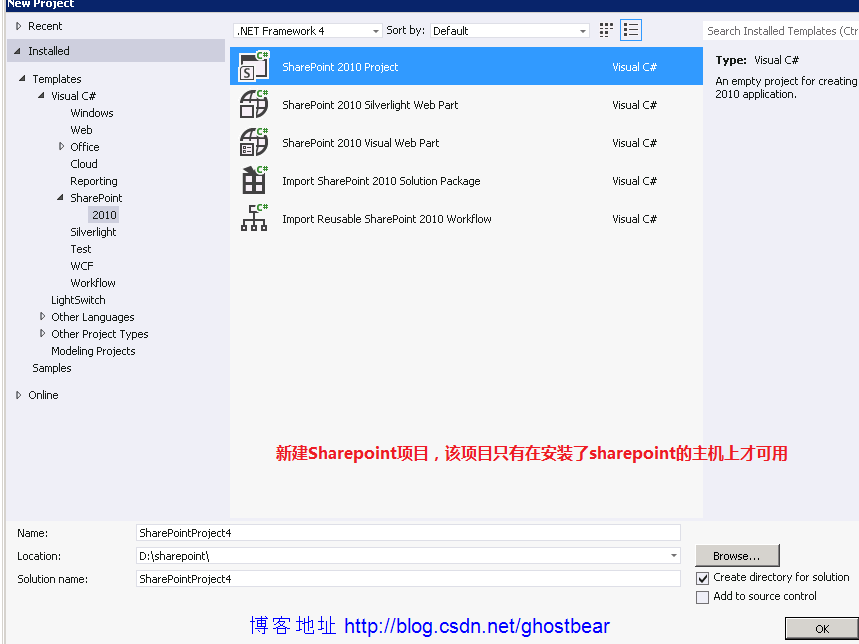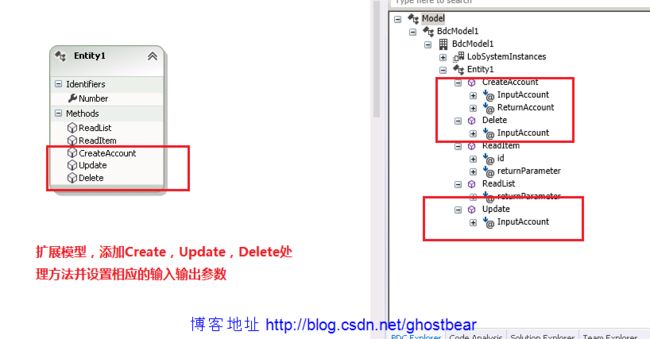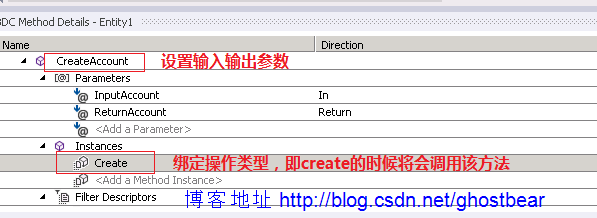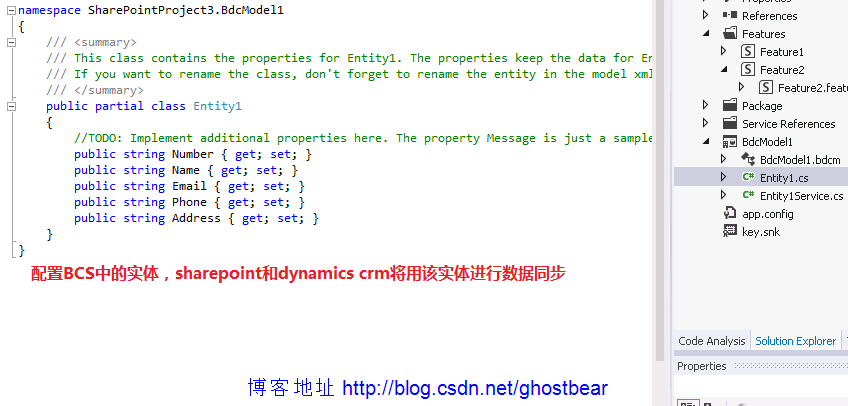Dynamics CRM 2011编程系列(57):使用Business Connectivity Services 集成Sharepoint 2010 (中)
接着上文,我们来看看步骤2),步骤3)和步骤4)的实现。
BCS项目的创建
图1
图2
图3
图4
图5
图6
BCS项目代码
public partial class Entity1
{
//TODO: Implement additional properties here. The property Message is just a sample how a property could look like.
public string Number { get; set; }
public string Name { get; set; }
public string Email { get; set; }
public string Phone { get; set; }
public string Address { get; set; }
}
}
/// <summary>
/// All the methods for retrieving, updating and deleting data are implemented in this class file.
/// The samples below show the finder and specific finder method for Entity1.
/// </summary>
public class Entity1Service
{
private static CRMSVC.ICURD svc = CreateSVC();
/// <summary>
/// This is a sample specific finder method for Entity1.
/// If you want to delete or rename the method think about changing the xml in the BDC model file as well.
/// </summary>
/// <param name="id"></param>
/// <returns>Entity1</returns>
public static Entity1 ReadItem(string id)
{
//TODO: This is just a sample. Replace this simple sample with valid code.
CRMSVC.Account tmp = svc.GetAccount(id);
return new Entity1() { Number=tmp.Number, Name=tmp.Name, Phone=tmp.PhoneNumber, Email=tmp.Email, Address=tmp.Address};
}
/// <summary>
/// This is a sample finder method for Entity1.
/// If you want to delete or rename the method think about changing the xml in the BDC model file as well.
/// </summary>
/// <returns>IEnumerable of Entities</returns>
public static IEnumerable<Entity1> ReadList()
{
//TODO: This is just a sample. Replace this simple sample with valid code.
List<Entity1> tmp=svc.GetAllAccount().Select<CRMSVC.Account, Entity1>(item => new Entity1() { Number = item.Number, Name = item.Name, Email=item.Email, Phone=item.PhoneNumber, Address=item.Address}).ToList();
return tmp.ToArray();
}
private static CRMSVC.ICURD CreateSVC()
{
EndpointAddress endpoint = new EndpointAddress("http://your server name: your port number/CURD.svc");
BasicHttpBinding binding = new BasicHttpBinding();
ChannelFactory<CRMSVC.ICURD> svcFactory = new ChannelFactory<CRMSVC.ICURD>(binding, endpoint);
return svcFactory.CreateChannel();
}
public static Entity1 CreateAccount(Entity1 InputAccount)
{
svc.CreateAccount(new CRMSVC.Account() { Number=InputAccount.Number, Name=InputAccount.Name, Address=InputAccount.Address, Email=InputAccount.Email, PhoneNumber=InputAccount.Phone});
return InputAccount;
}
public static void Update(Entity1 InputAccount)
{
svc.UpdateAccount(new CRMSVC.Account() { Number = InputAccount.Number, Name = InputAccount.Name, Address = InputAccount.Address, Email = InputAccount.Email, PhoneNumber = InputAccount.Phone });
}
public static void Delete(Entity1 InputAccount)
{
svc.DeleteAccount(new CRMSVC.Account() { Number = InputAccount.Number, Name = InputAccount.Name, Address = InputAccount.Address, Email = InputAccount.Email, PhoneNumber = InputAccount.Phone });
}
}
小结
1. BCS模型扩展的方法需要加上方法绑定(instances)。
2. 输入参数与输出参数的typedescriptor需要与BCS实体的属性一致,否则同步后的数据将会丢失该属性的数据。
源码下载





